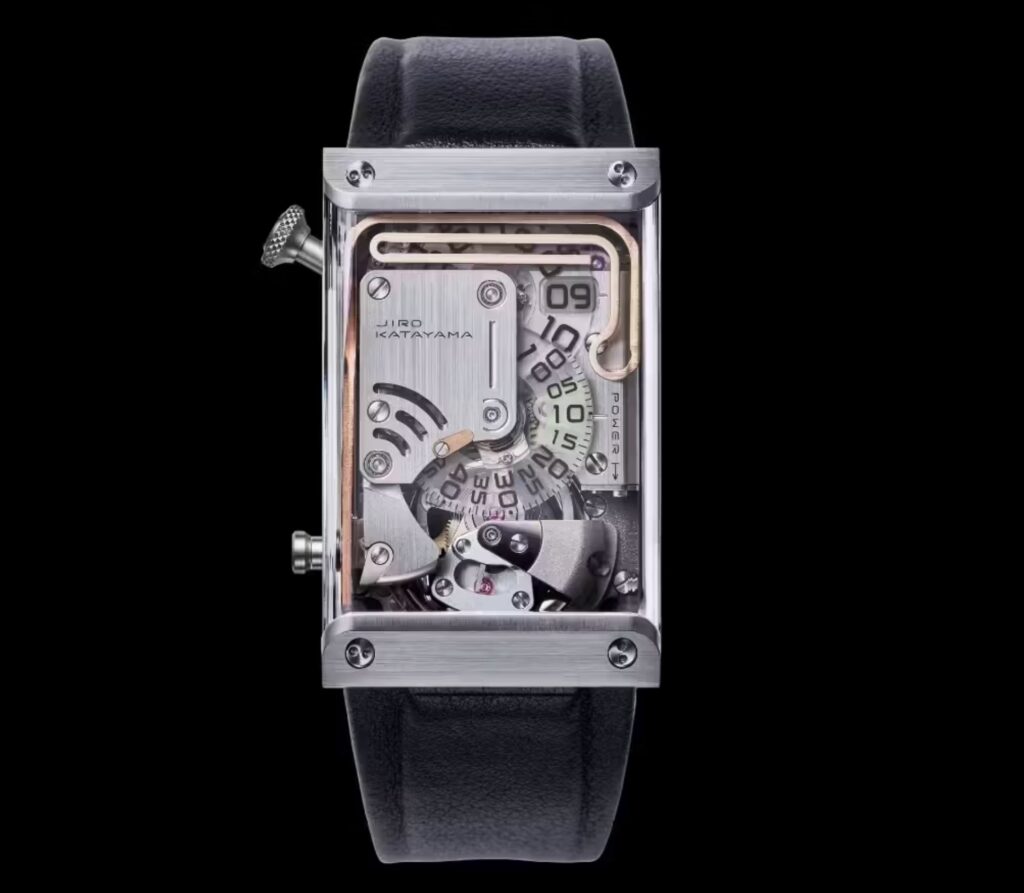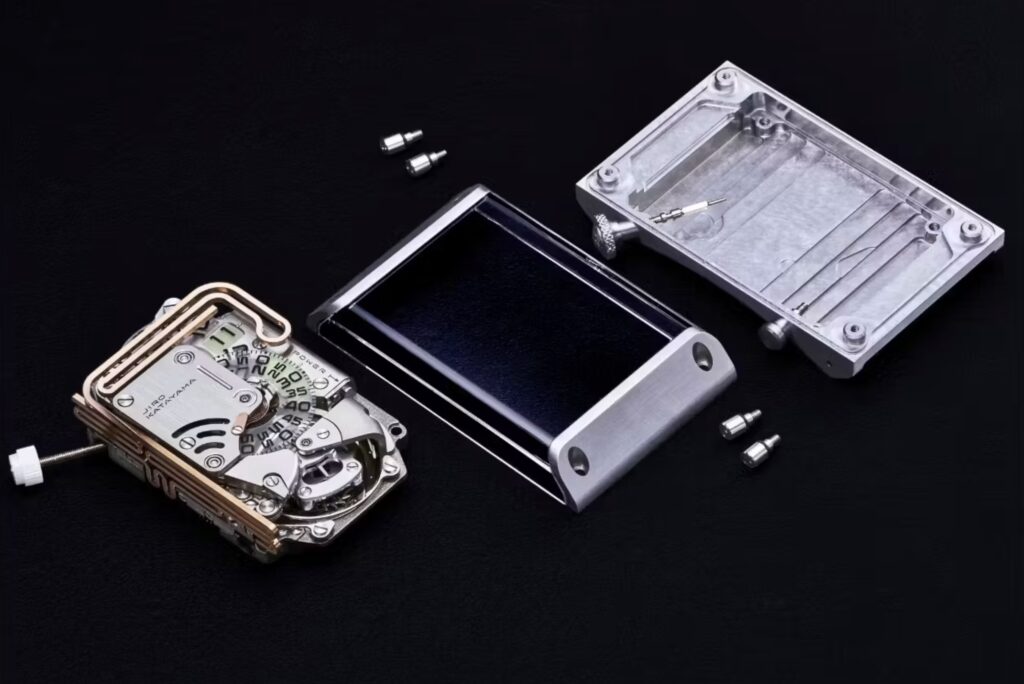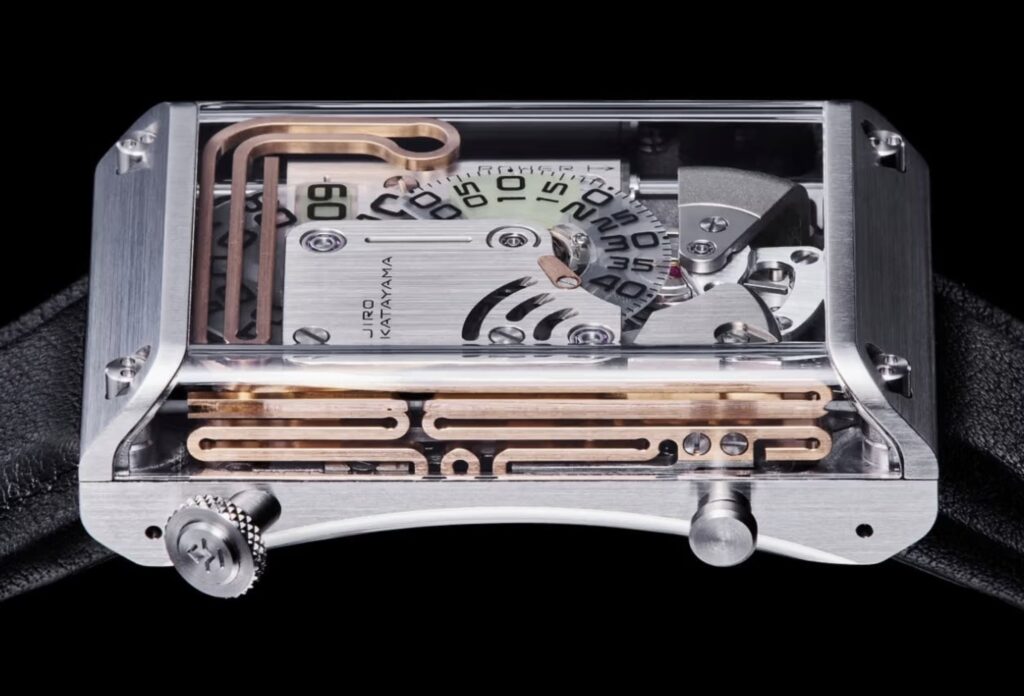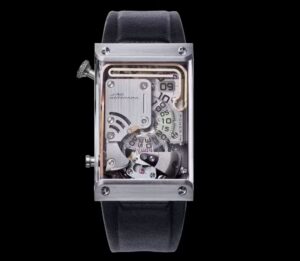The Japanese, almost cult-like watchmaker Ōtsuka Lōtec has once again challenged the boundaries of what a watch can be. Its new model, the No. 9, arrives without fanfare yet instantly commands attention. At first glance, it appears diminutive, almost modest. And yet within that tiny case lies one of the most ambitious feats of horological engineering seen in recent years. In stripping away the conventions of jewelry-like luxury, Ōtsuka Lōtec presents not just a watch but a philosophy of exposure, compression, and utility.
Ōtsuka Lōtec has long been known for producing rare, affordable watches that resemble vintage power meters more than bracelets of prestige. This aesthetic quirk has become the brand’s signature. Where Swiss houses polish their cases into jewelry and French designers flirt with ornamentation, Ōtsuka Lōtec embraces an industrial rawness. The No. 9 takes this identity to an extreme — shrinking it down, opening it up, and reminding us that a watch’s true purpose is to measure time honestly.
The Cult of Ōtsuka Lōtec
The label “cult-like” is not hyperbole. Unlike mainstream watchmakers who depend on glossy advertising campaigns and celebrity ambassadors, Ōtsuka Lōtec communicates through scarcity and silence. Announcements often appear only on Instagram, with grainy studio images of prototypes and minimal captions. Models vanish quickly into the hands of collectors, and secondary markets barely register them, not because of speculative hype but because owners rarely let go.
Collectors describe the allure less in terms of status and more in terms of ideology. An Ōtsuka Lōtec watch is an object of conviction, a refusal to participate in the theater of luxury. To wear one is to signal alignment with a Japanese ethos of precision, restraint, and utility. The No. 9 crystallizes this ethos, taking the design language of vintage electrical meters and pushing it into radical new territory.
From Power Meters to Wristwatches
Ōtsuka Lōtec’s aesthetic roots lie in the industrial equipment of mid-20th-century Japan. Electrical meters, control panels, and gauges — tools designed with clarity and durability in mind — provided the visual inspiration. These devices were not meant to impress but to serve. Their fonts were bold, their layouts functional, their casings utilitarian.
By transposing these qualities onto the wrist, Ōtsuka Lōtec rejected the conventional grammar of luxury watchmaking. Instead of sunburst dials or precious metal cases, the brand offered blocky typography, skeletonized housings, and exposed screws. Watches became more akin to handheld instruments than jewelry.
The No. 9 takes this industrial homage further. Its compact form does not dilute the meter-like inspiration but intensifies it. When one looks at its dial, one sees not a luxury accessory but a portable gauge, a wearable testament to measurement itself.
The Power of Small
One of the No. 9’s defining traits is its size. In an era dominated by oversized dive watches and chunky chronographs, its tiny frame is almost shocking. Measuring only a little over 30mm across, it feels impossibly small to contain such sophisticated mechanics. And yet therein lies its radicalism.
Japan has long celebrated the art of miniaturization, from pocket radios to capsule hotels. The No. 9 belongs to this lineage. By compressing functionality into a reduced scale, it demonstrates that elegance comes not from largeness but from precision. Every millimeter of its case is purposeful, every screw and conduit condensed to serve timekeeping with ruthless efficiency.
Wearing the No. 9 feels less like flaunting size and more like carrying a pocket of concentrated engineering. Its smallness is not a weakness but a philosophical stance: proof that time itself requires no excess.
Stripping It Bare
The brand’s tagline for the No. 9 could very well be “nothing to hide.” Transparency is its most striking characteristic. Instead of concealing mechanics beneath layers of decorative dial work, the watch exposes everything. Wheels, discs, and conduits are visible, giving the wearer a direct view of time’s machinery.
This transparency resonates with Japanese aesthetics. It echoes wabi-sabi, the appreciation of imperfection, where beauty is found not in polish but in honesty. It evokes mono no aware, the awareness of impermanence, as one watches the visible wheels turn and seconds vanish irretrievably. In stripping the watch bare, Ōtsuka Lōtec invites wearers to contemplate time not as a glamorous abstraction but as a raw, mechanical process.
Specs That Defy Size
For all its smallness and stripped-down appearance, the No. 9 is no fragile novelty. Katayama and his team have crammed into its frame specifications that rival larger, flashier watches. Water resistance ensures durability in daily use. Anti-magnetic shielding protects accuracy against modern environments saturated with electronics. A high-precision hybrid movement keeps time with remarkable fidelity.
Perhaps most impressive is how these features coexist within such a minimal footprint. The engineering challenge of fitting shock absorption, power regulation, and protective treatments into a case barely larger than its movement is monumental. And yet, like a Japanese kei car — tiny yet endlessly functional — the No. 9 proves that compression need not mean compromise.
A Design of Circuits and Gauges
Visually, the No. 9 resembles not a traditional dial but a fragment of circuitry. Copper-colored conduits snake across its surface like electrical pathways. Numbered wheels rotate in plain sight, overlapping and colliding to form a living display. Screws and rivets punctuate the structure, emphasizing the mechanical over the ornamental.
The result is less a watch face than a control panel for time. Looking at it feels like peering into an electrical meter, where digits flicker to record invisible forces. Here, the invisible force is time itself, made legible through engineering exposure.
This design is not meant to flatter but to intrigue. It challenges wearers to reconsider what a watch dial should look like, trading symmetry and polish for utility and raw presence.
The Philosophy of Utility
Underlying every design decision is a philosophy of utility. For Ōtsuka Lōtec, a watch is not jewelry. It is not an heirloom crafted for aristocratic display. It is a tool, a meter strapped to the wrist, designed to measure time with clarity and honesty.
This philosophy distances the brand from the luxury narratives of Switzerland. Whereas Swiss watchmakers often emphasize heritage, exclusivity, and preciousness, Ōtsuka Lōtec emphasizes function, exposure, and sincerity. The No. 9 embodies this divergence fully. Its beauty lies not in polish but in purpose.
Community and Cult Appeal
Because Ōtsuka Lōtec refuses mainstream channels, its audience has become a community. Collectors, designers, and engineers gather online to dissect new models, interpret cryptic Instagram posts, and celebrate the brand’s radicalism.
For this community, the No. 9 is more than a watch. It is a statement of alignment with values — values of transparency, utility, and reduction. To own one is to participate in a dialogue about what watches should be, and about what luxury might mean outside the frameworks of status.
The cult appeal grows not through marketing but through resonance. Those who understand, understand deeply. Those who do not, look elsewhere.
Japanese Cultural Context
The No. 9 must also be situated within the broader cultural context of Japan. Transparency, miniaturization, and industrial inspiration are not isolated quirks but reflections of national traditions.
Wabi-sabi teaches that imperfection and exposure carry their own elegance. Mono no aware reminds us that time is fleeting and bittersweet. The Japanese fascination with smallness — from bonsai trees to capsule toys — reveals a cultural admiration for compression. And the country’s postwar industrial history, filled with meters, gauges, and precision tools, provides the aesthetic foundation.
Ōtsuka Lōtec distills all these elements into a watch. The No. 9 is as much a cultural artifact as it is a timepiece.
Against Swiss Luxury
To truly appreciate the No. 9, one must contrast it with Swiss traditions. Skeletonized watches from Geneva often sell for astronomical prices, their transparency meant to showcase artisanal decoration. Brands like Richard Mille use transparent cases as spectacles of excess.
Ōtsuka Lōtec, by contrast, uses transparency to strip away spectacle. There is no attempt at status theater, no deployment of diamonds or gold. Instead, the No. 9 uses transparency as honesty. Where Swiss skeletons flaunt, the Japanese skeleton reveals.
This difference explains the cult following. Those disillusioned with Swiss luxury’s pageantry find in Ōtsuka Lōtec an alternative: watches that are democratic in price but radical in philosophy.
The Future of Ōtsuka Lōtec
The No. 9 points toward a future where Ōtsuka Lōtec continues to refine its radical minimalism. Likely, new models will remain small, transparent, and inspired by industrial design. Scarcity will persist, announcements will stay cryptic, and the cult will grow by resonance rather than marketing.
Either the brand expands or stays niche remains uncertain. But what is clear is that Ōtsuka Lōtec will never abandon its core philosophy. To do so would betray the very values that have built its reputation.
No comments yet.











